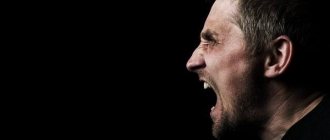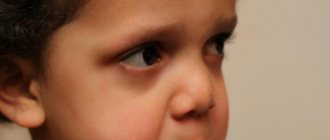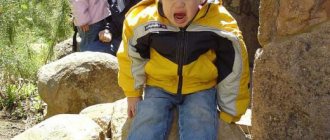Every society has certain standards of mental health, law, culture and morality. Social norms often suppress the instincts and desires of the individual. But if you want others to understand and accept you, you need to somehow meet these standards. For example, when you see a beautiful flower bed in bloom and follow social norms, you inhale the aroma and admire the flowers instead of picking them and taking them with you. Naturally, when raising your child, you try to accustom him to the same way of acting. And yet, even among respectable parents, the behavior of children sometimes goes beyond the norms prescribed by society. Psychologists call this behavior deviant, asocial, inadequate, and so on. What is the phenomenon of children with behavioral problems and how to deal with it?
Deviant behavior
In fact, children with behavioral problems are not that uncommon. Some deviations not only cause the indignation of parents and teachers, but also carry the seeds of future misconduct, posing a threat to the child himself, his environment and even society as a whole. Studying children with behavioral disorders, psychologists divide their actions into social deviations of self-interested, aggressive and social-passive orientation. Social deviations of selfish orientation include theft, fraud, speculation and other offenses, the purpose of which is to gain profit. Deviations of aggressive orientation are directed against the individual - these are insults, hooliganism, beatings, etc. Socially passive deviations are associated with a reluctance to solve personal and social problems, these include avoidance of school and work, vagrancy, drug addiction and suicide. Behind every external manifestation in children with behavioral problems there can be deep personal problems. And since there is no universal answer to all situations of deviant behavior, in order to help a child, you need to understand the reasons for each specific situation.
Classification
Classification problem
There is no single typology for many reasons. Firstly, the problem of deviant behavior is being actively studied by psychologists, doctors, sociologists, criminologists and many other specialists. For each of them, certain aspects of this phenomenon are important. Therefore, they all use different classifications.
Secondly, there is no single theoretical basis for deviant behavior. Therefore, questions such as:
- Which basic forms of behavior are deviations, and which are reactions dictated by character or personal attitudes?
- What criteria are there to distinguish norm from deviation?
- Does positive deviant behavior exist, or is it only destructive?
Due to the lack of consensus on these issues, experts create many proprietary classifications.
Merton classification
Types of deviation, according to the very first classification (created in 1938) by Merton, are identified in accordance with the methods of adaptation of the individual to the surrounding conditions. A total of 5 types of behavior are described, and only the first is the norm, and the remaining 4 are deviations:
- submissive, conformal - resigned submission to social goals and means of achieving them;
- innovative - recognition of goals, but independent choice of means to achieve them;
- ritual - rejection of both goals and methods, but blind, automatic adherence to some traditions instilled in childhood remains;
- retertiary - complete rejection of all norms that society offers, isolation and existence separate from it;
- rebellious (revolutionary) - an attempt to change society in accordance with one’s own goals and means of achieving them.
You can read more about this classification in Merton's book Social Structure and Anomie (1966).
Korolenko's typology
Russian psychiatrist and psychotherapist Ts. P. Korolenko, in collaboration with T. A. Donskikh, proposed his own classification of deviant behavior.
Non-standard
Violating generally accepted rules, going beyond social stereotypes, but positively influencing the development of society.
Destructive
It can be externally destructive (violation of social rules) and internally destructive (destruction of one’s own personality). Externally destructive behavior, in turn, is represented by addictive behavior (escape from reality with the help of drugs, adrenaline, and other methods) and antisocial behavior (consciously committed crimes).
Intradestructive is also represented by different types:
- suicide;
- narcissism;
- conformism;
- fanaticism;
- autism.
This classification is presented in more detail in the book by Korolenko and Donsky “Seven Paths to Disaster: Destructive Behavior in the Modern World” (1990).
Mendelevich
The classification of the Russian psychiatrist, psychotherapist and narcologist, clinical psychologist Vladimir Davydovich Mendelevich is based on ways of interacting with reality. He identifies the following types of deviant behavior:
- delinquent;
- addictive;
- pathocharacterological;
- psychopathological;
- hyperpowers.
Their description can be found in Mendelevich’s textbook “Psychology of Deviant Behavior” (2005). There you can find the answer to the common question of how deviant behavior differs from delinquent behavior. The latter is one of the manifestations of the former. Deviation is a more general concept that includes all of the above types. Deliquence is an illegal act, most often punishable by criminal law and causing harm to others. Addiction is an escape from reality.
Zmanovskaya
Psychologist-psychanalyst, Doctor of Psychological Sciences Elena Valerievna Zmanovskaya suggests the following consequences as a criterion for classifying deviant behavior:
- antisocial (delinquent) - crimes (dangerous to the lives of other members of society, criminal punishment for the carrier);
- asocial (immoral) - aggression, games for money, theft (uncomfortable living conditions for other members of society, fine, isolation for the wearer);
- autodestructive (self-destructive) - suicide, addiction, fanaticism, victimization (danger to the carrier himself).
The classification is described in detail in the textbook for universities “Deviantology: Psychology of Deviant Behavior” (author - Zmanovskaya).
General classification
In modern psychology, it is customary to distinguish between positive and negative deviant behavior. Although many experts reject the fact that it can be positive.
Negative forms of deviation are dangerous both for members of society and for the carrier himself:
- criminality;
- alcoholism;
- addiction;
- theft;
- prostitution;
- gambling addiction;
- vagrancy;
- terrorism;
- extremism;
- vandalism;
- suicide.
Positive forms of deviation bring benefits to society, but significant or minor deviations from generally accepted norms may be observed:
- self-sacrifice;
- heroism;
- workaholism;
- heightened feelings of justice or pity;
- genius, talent.
Many experts do not believe that forms of deviation can be positive. Although they benefit society, they harm the wearer himself, so they cannot be classified as positive.
Professor, Doctor of Pedagogical and Psychological Sciences Yuri Aleksandrovich Kleiberg adds another type of deviant behavior to the generally accepted classification - socially neutral (begging).
This is interesting. In the books of science fiction writers, behavior that is familiar to us is often presented as deviant for the society in which it is observed. For example, Bradbury (“Fahrenheit 451”) calls reading deviant, Lukyanenko (“Stars are Cold Toys”) — touches and hugs, Orwell (“1984”) — personal relationships, Zamyatin (“We”) — a person with a soul capable of loving and thinking independently.
Inappropriate child behavior
The child’s inappropriate behavior is based on negative affective experiences associated with the dissatisfaction of needs that are important to him. When an assessment of one's abilities, based on the child's previous achievements, does not correspond to the current situation and one must admit one's inadequacy, some children experience affective experiences. Instead of overestimating their aspirations, children show an inadequate reaction to failure - increased sensitivity, stubbornness, isolation, emotional instability, inhibition, denial. For example, if in one school a child was successful in English and received praise from the teacher, then when he enters another school, where his achievements do not stand out from other students, he may begin to resent the teacher and believe that he is being treated unfairly. Inappropriate behavior of a child is a kind of defensive reaction designed to help in the event of a fiasco. In order not to lower self-esteem, the child begins to blame parents, teachers, immediate surroundings, circumstances, fate. Inappropriate behavior of a child causes responses from teachers and parents, which in turn intensifies affective experiences. The circle closes.
Antisocial behavior of children
Speaking about antisocial behavior in children, psychologists note that it arises as a result of a violation of the interaction of the individual with the environment. Children with antisocial behavior are divided into four groups:
- First group. It includes children whose antisocial behavior is associated with deviations in the development of the emotional-volitional sphere and individual characteristics, up to psychopathy;
- Second group. These are children whose antisocial behavior is associated with incorrect forms of influence. For example, when adults impose strict disciplinary requirements on a child without taking into account his age, emotional state, or experiences. Children of this group do not need behavior correction; on the contrary, it is adults who must reconsider their attitude to their actions in the situation;
- Third group. It includes children with serious gaps in moral and ethical education. In other words, these are neglected children whose antisocial behavior is associated with the connivance of adults. Such children do not consciously violate social norms because they are simply not familiar with them;
- Fourth group. These are difficult-to-educate teenagers; the antisocial behavior of children in this group is associated with a distortion of moral ideas and personality traits. Such children understand that their behavior is contrary to social norms, but they do not want to change it and refuse any interference in their lives, reacting to critical feedback with indifference, defiant behavior and disagreeing with the negative assessment of others. This is the most difficult group to educate, since such children are confident that they are right.
Theories
Based on the leading causes of deviations from social norms, various theories of deviant behavior have been created.
Biological theories
The bottom line: deviant actions are a consequence of innate inclinations. Such people cannot restrain their base needs and do everything to satisfy them, regardless of the rules and even the fear of punishment.
Lombroso
The theory of the innate criminal of the Italian psychiatrist, teacher and psychologist Cesare Lombroso is biological. Based on the results of many years of work in prisons, the scientist concluded that the deviant actions of 1/3 of all criminals are due to qualities inherent in nature itself. They all differ in a set of the same characteristics:
- stubborn in their malice and ferocity;
- underdeveloped;
- unable to curb their instincts;
- not amenable to correction;
- having a specific appearance: a disordered jaw, a flat nose pressed into the face, a sparse beard, long arms.
Lombroso compared them to monkeys. But the British doctor Charles Goring criticized his theory and substantiated its inconsistency.
Sheldon
The constitutional theory of temperament of the American psychologist William Herbert Sheldon also belongs to the biological ones. In his opinion, a person’s actions can be predicted by his body type:
- endomorphs (moderately overweight) are sociable and know how to get along with others;
- mesomorphs (strength and slimness) are restless, active, insensitive to pain and most prone to deviant behavior;
- ectomorphs (fragile body) are prone to introspection, have increased sensitivity and nervousness.
However, Sheldon's theory doesn't always work. Among criminals and other persons with deviant behavior there are people with different body types.
Gove
Another biological theory based on the influence of gender and age characteristics. Author: Walter Gove. Conclusions from the research:
- Most often, deviant actions are observed among young people, the peak occurs at 18-24 years old;
- in second place are teenagers 13-17 years old;
- on the third - 25-30 years;
- and only then comes the age after 30 years, when crimes are committed either in a state of passion or as a result of serious mental disorders.
There is also scattered evidence from individual studies suggesting that the tendency to deviate may be due to genetics:
- twins with the same number of chromosomes in 50% of cases commit the same violations of norms separately from each other, without agreement;
- Adopted children with their deviations are similar to biological, not adoptive parents;
- men with an additional chromosome Y are characterized by severe psychopathic behavior, low intelligence and increased deviation.
Most psychologists do not accept biological theories. The only thing they agree on is that the type of nervous system can play a certain role in deviant behavior, but it is far from decisive.
Social psychological theories
The bottom line: society itself provokes a person to violate its own rules.
Durkheim
Durkheim's famous theory of anomie. In his opinion, during crises, wars, revolutions, coups, changes in power and other social changes, people are in a state of confusion and disorganization and lose their bearings. This makes them behave inappropriately.
Merton
The theory of personality adaptation to the surrounding conditions of the American sociologist Robert Merton expands on Durkheim's anomie. According to it, deviation is influenced not only by social crises, but, first of all, by a person’s reaction to them. This classification is presented below.
Becker
One of the most famous social psychological theories is the theory of labels or stigma. The author is American economist Gary Stanley Becker. He described the process of labeling by the powerful sections of society - the lower ones. Traditionally, gypsies, homeless people, drug addicts, and alcoholics are classified as deviants. But this is unfair, because among them there may be people who adhere to general rules and do not break the law. However, the label of an antisocial, dysfunctional layer of society makes them ultimately behave like deviants.
Psychological theories
The bottom line: the main causes of deviant behavior lie in the psyche.
Existential-humanistic
Representatives of this theory believed that the main reason for deviant behavior is the individual’s disappointment in himself. Each of them focuses on certain aspects of this process.
Austrian psychiatrist, psychologist and neurologist Viktor Frankl considered the suppression of spirituality and loss of meaning in life as a provoking factor.
According to the American psychologist, author of client-centered psychotherapy Carl Rogers, a person’s distorted ideas about himself, low self-esteem, and a tendency to self-deprecation are to blame.
American psychologist, founder of humanistic psychology Abraham Maslow called the frustration of basic needs the main reasons.
Psychodynamic
It is based on Freud's psychoanalysis. The main source of deviant behavior is the conflict between the unconscious and the conscious. Moreover, the former are based on sexual desires. True, neo-Freudians no longer focus on it and give priority to the lack of emotional contact, most often the lack of close communication with the mother.
Behavioral
Classical behaviorism considers deviant actions as a result of the influence of the environment on the individual. In their opinion, if a child is initially punished severely enough for misdeeds, in the future fear will stop him from committing them. Behaviorists pay much attention to methods for correcting deviations, which include negative reinforcement, emotional-negative conditioning and operant response extinction.
Cognitive
According to the theory of American psychotherapist, professor of psychiatry and creator of cognitive psychotherapy Aaron Beck and American psychologist, cognitive therapist, author of rational-emotive behavior therapy Albert Ellis, the causes of deviant behavior are in maladaptive thought patterns that trigger inappropriate feelings and actions.
Suicidal behavior in children
In the most tragic cases, deviations in the child’s behavior take an extreme form - suicide. Psychologists believe that suicidal behavior in children is associated with an ambivalent attitude towards death - the child perceives death as a way of manipulation, for example, imagining how the mother will be upset, but does not realize the irreversibility of the consequences.
Typically, suicidal behavior in children is aimed at attracting attention; it is preceded by depression, boredom, loneliness, isolation, and aggression towards the environment. Sometimes suicidal behavior takes a hidden form when a child chooses extreme sports, joins dangerous groups, or takes drugs.
The reasons for suicidal behavior in children include conflicts with parents, peers, immediate environment, and misunderstanding at school. At the same time, children most often refuse the help of adults.
Integration into society
Typically, children with behavioral problems have difficulty making contact with teachers, psychologists, and adults, explaining this with the expression “they don’t understand me.” And indeed, in order to create a trusting relationship with such a child, you need to have a share of sympathy, interest in his life, hopes and worries, be able to listen patiently, give advice, empathize and move from free communication to guidance in a timely manner. Not every parent is capable of this, and certainly not every teacher. But this is the only way to reach children with behavioral disorders, form their understanding of universal human values, develop morally positive traits and character traits, and also help them adequately assess the picture of the world and be accepted into society.
Preventive and corrective measures
The main problem of deviation is that it is difficult for a child to control himself and communicate correctly with adults and peers. From a pedagogical and psychological point of view, in order to eliminate emotional distortion in the behavior of the baby, it is necessary to overcome the following stages:
- To develop a child’s interest in communicating with peers and adults.
- Strengthen the acquired communication skills with others, existing knowledge about the culture of behavior.
- Develop the skill of correct social behavior.
- Teach your child to correctly assess his personality and control his emotional state.
- Develop the ability to use various forms of interaction when communicating with people.
Prevention of deviance - methods
Corrective methods for correcting behavior are based on types of activities that interest preschool children. The main type is the game. The correct development of the communicative and emotional sphere involves the use of the following types of activities:
- outdoor game;
- staging a “difficult to resolve situation”;
- word games with movements;
- dancing and singing;
- reading fiction.
Involvement in interesting activities is one of the ways of prevention.
In addition to outdoor games and various activities that correct deviant behavior, it is necessary to develop a correct daily routine and diet for the child, and monitor the viewing of television programs and films.
Parents should show patience and understanding and practice self-control.
The main thing in dealing with deviant children is patience.
Preschool children are the main object of unsuccessful pedagogical experiments, which occur due to the insufficient level of psychological and pedagogical awareness of adults.
As a result, preschool children develop a certain form of deviant behavior, which, without special correction, persists into adolescence. As the child gets older, it is much more difficult to deal with deviant behavior, so it is important to eliminate the problem at an early stage. leave a comment









